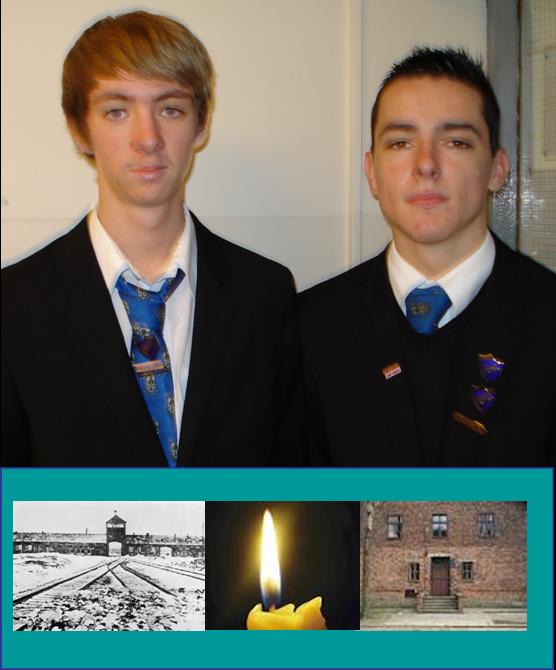JORDAN AND COREY VISIT AUSCHWITZ-BIRKENAU
Senior pupils Jordan and Corey visited Auschwitz-Birkenau as part of a programme organised by the Holocaust Educational Trust. Thank you to Mrs S McNichol, our Principal Teacher of History, for arranging this.
Here is Jordan and Corey's report:
We arrived at Auschwitz at around 12 noon and what was most striking about the camp was how normal it looked. If we had not known any better it would be impossible to believe the horrors that had once been carried out on these grounds.
This part of the camp “Auschwitz 1” is now a museum and our group was given a tour around it by a guide. Inside the museum there are hundreds of photographs of victims who perished in the camp, many of whom did not live beyond a month. A particularly grim part of our tour was bearing witness to the collections of hair, shoes and glasses which were taken from prisoners upon their arrival. The final part of the tour was the visit to the “Death Wall” where prisoners who disobeyed the rules of the camp were taken and shot.
Next was the visit to Auschwitz Birkenau which was designed for the extermination of prisoners. Before we entered the camp itself, we went up to the top of a watch tower where the enormity of the camp could be seen. Our guide then led us into the camp and showed us a few of the “barracks” which were actually nothing more than stables built for horses in which up to 700 prisoners were forced to sleep and live.
After we had experienced what it was like in one of the barracks we were taken down a long road with a rail line running right down the middle of it. At the end of the road we got to see the remains of a gas chamber which had been partially destroyed by some of the Germans who did not want people finding out about this horrible place. We were then taken by our guide to a place which looked like a house. It contained artefacts behind glass windows of some of the things found here after the war.
We were led into another room which had a massive wall with pictures of people who were prisoners in the camp. Our guide told us to look at the wall and pick out someone from the pictures that reminded us of someone we knew and how we would feel if they were to be killed in this camp during the war. This was quite emotional.
A rabbi came in and talked to us about the misconceptions of Birkenau and what it stands for nowadays. After listening to the rabbi we went out and lit candles in respect for those who died. We then had to leave to catch our flight home.
Overall Poland and Auschwitz opened our eyes to the harsh reality of what actually happened in concentration camps and it was a privilege to experience it.
